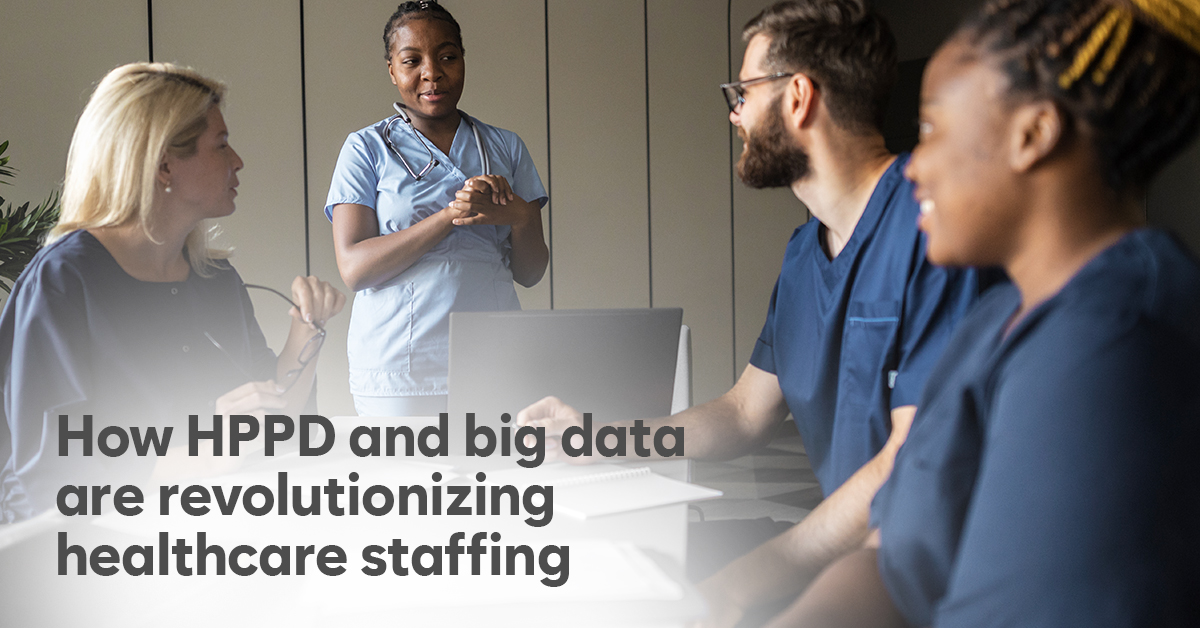In the ever-evolving landscape of healthcare, the need for efficient and effective staffing has never been more crucial. As the demand for healthcare services continues to rise, hospitals and healthcare facilities are exploring innovative solutions to optimize their staffing models. Two key players in this revolution are the Health Professional Patient Density (HPPD) metric and Big Data analytics.
The Evolution of Healthcare Staffing
Traditionally, healthcare staffing relied on static models that often struggled to adapt to the dynamic nature of patient care. Staffing decisions were frequently made based on historical data and averages, leading to either overstaffing or, more critically, understaffing. Moreover, both scenarios can have severe implications on patient outcomes and staff satisfaction.
Recognizing these challenges, the healthcare industry has turned to more sophisticated tools and metrics to enhance staffing strategies. One such metric gaining prominence is HPPD, which measures the number of healthcare professionals required per patient. HPPD takes into account the specific needs of patients and provides a more nuanced approach to staffing decisions.
The Power of HPPD
HPPD is a game-changer in healthcare staffing because it considers numerous factors. These include patient acuity, complexity of cases, and required nursing care. Unlike traditional staffing models that rely on fixed nurse-to-patient ratios, HPPD adapts to the unique demands of each patient and clinical setting. This results in a more optimized and responsive staffing approach. Thus, ensuring that patients receive the right level of care at the right time.
For instance, a cardiac care unit with patients recovering from surgeries may require a higher HPPD than a general medical-surgical unit. By tailoring staffing levels to patient needs, healthcare facilities can improve patient outcomes, enhance patient satisfaction, and mitigate burnout among healthcare professionals.
The Role of Big Data in Healthcare Staffing
While HPPD addresses the micro-level dynamics of staffing, Big Data takes the macro approach. The healthcare industry is amassing an unprecedented amount of data, from electronic health records and medical imaging to patient demographics and treatment outcomes. Leveraging this vast pool of information, Big Data analytics plays a pivotal role in optimizing healthcare staffing on a broader scale.
Big Data analytics allows healthcare administrators to identify patterns, trends, and correlations in staffing needs. By analyzing historical data, predictive models can be developed to forecast patient admission rates, peak hours, and seasonal variations in demand. This foresight enables facilities to proactively adjust staffing levels, ensuring that they are adequately prepared for fluctuations in patient volumes.
Moreover, Big Data facilitates the identification of staffing inefficiencies and areas for improvement. By analyzing data on overtime hours, nurse turnover rates, and patient satisfaction scores, healthcare organizations can pinpoint areas that require attention. This data-driven approach enables continuous improvement in staffing strategies, fostering a more adaptive and resilient healthcare workforce.
The Synergy of HPPD and Big Data
The real revolution in healthcare staffing lies in the synergy between HPPD and Big Data. Integrating HPPD into Big Data analytics allows healthcare facilities to achieve a granular understanding of staffing needs. By combining patient-specific requirements with broader data trends, facilities can create patient centric staffing models strategically aligned with organizational goals.
For example, during flu seasons or other periods of increased patient admissions, Big Data can identify these trends and predict the corresponding surge in staffing requirements. HPPD can then be applied to customize the staffing levels based on the specific needs of patients during these influxes, ensuring quality care without overburdening the healthcare workforce.
Overcoming Challenges and Moving Forward
While the integration of HPPD and Big Data in healthcare staffing holds immense promise, it is not without its challenges. Privacy concerns, data security, and the need for advanced analytics capabilities are among the hurdles that healthcare organizations must navigate. Collaborations between healthcare providers, technology experts, and policymakers are essential to address these challenges and create a framework that fosters innovation while safeguarding patient information.
In conclusion, the marriage of HPPD and Big Data is reshaping the landscape of healthcare staffing. As the industry moves towards a more patient-centric and data-driven approach, healthcare facilities stand to benefit from improved patient outcomes, enhanced staff satisfaction, and greater operational efficiency. The revolution is underway, and as technology continues to advance, the potential for innovation in healthcare staffing is limitless.






